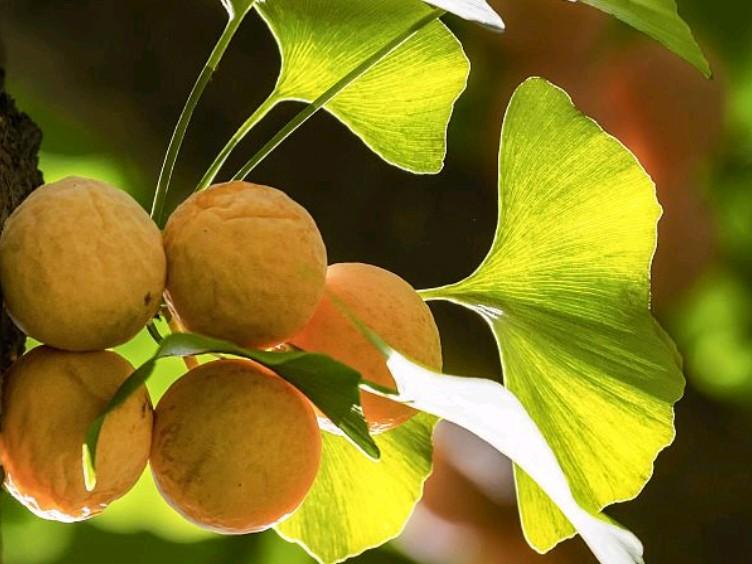What Is the Use of Ginkgo Biloba in Animal Feeding?
Ginkgo biloba is a plant in the family Ginkgoaceae. Ginkgo biloba leaves have the effects of activating blood circulation and removing blood stasis, relieving pain, lowering lipids, and resisting oxidation[1]. Plant-derived feed additives containing ginkgo biloba leaf ingredients can improve the growth performance of livestock and poultry and improve their intestinal health and function [2]. Ginkgo biloba leaf extract (EGB) is an extract isolated and purified from ginkgo biloba leaves. Its main components are flavonoids, terpenoids (terpenylactones), and polypenols [3-4]. This paper reviews the research progress of the composition, function and application of ginkgo biloba and its extracts in animal production, with a view to providing a reference for the further application of ginkgo biloba and its extracts as feed additives in livestock and poultry production.
1 Ginkgo biloba and active ingredients
On a dry matter basis, ginkgo biloba contains 5.6% protein, 16.8% total sugar, 3.08% reducing sugar, 27.22 mg/100 g vitamin C, and 1.8 mg/100 g vitamin E [5]. Flavonoids and terpenoids are the active ingredients in ginkgo biloba leaves that have unique pharmacological effects [6]. At present, more than 200 chemical components have been extracted and isolated from ginkgo biloba leaves and have been confirmed, mainly including flavonoids, terpenoids, polysaccharides, ketones, vitamins, chlorophyll, carotene, 17 amino acids, 25 trace elements, etc. [7-8].
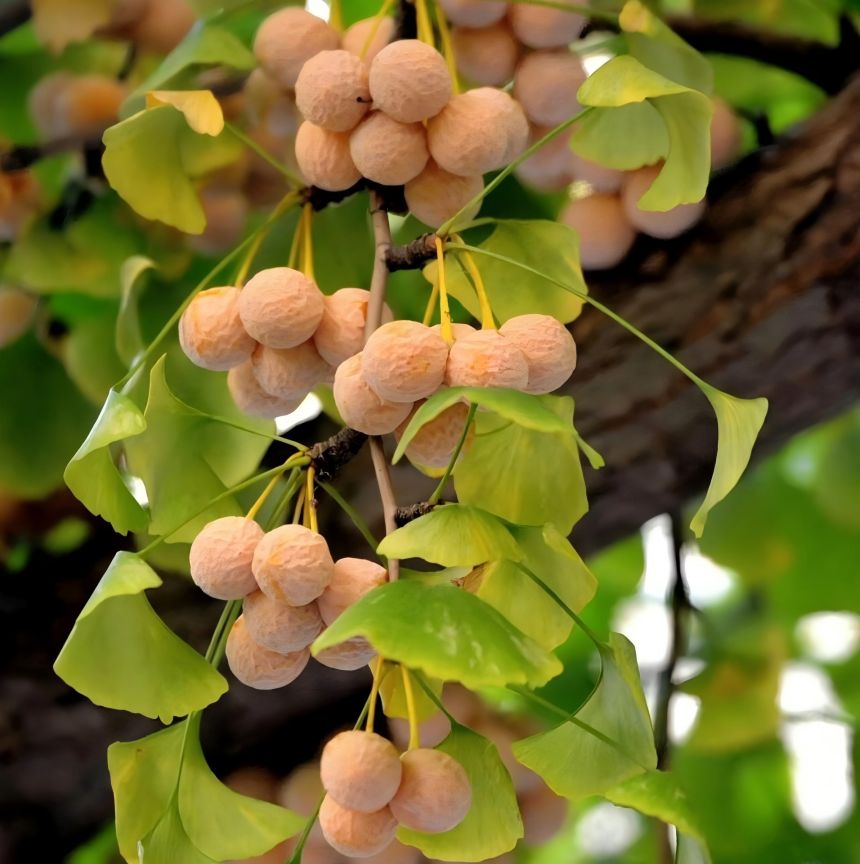
1.1 Flavonoids
Ginkgo biloba flavonoids are mainly found in the leaves and outer seed coats of ginkgo biloba. Ginkgo biloba flavonoids have antioxidant, anti-inflammatory, neuroprotective and lipid-lowering effects [9]. At present, more than 40 types of flavonoids have been isolated from ginkgo biloba leaves, of which 20 have been structurally identified, and their content is 2.5% to 2.9% [10]. Li Ling et al. [11] showed that ginkgo flavonoids can be divided into three categories based on molecular structure: flavonols and their glycosides, a total of 28 types, which can be used as standards to measure the total flavonoid content; 6 types of diflavonoids; and 6 types of catechin-type flavonoids. Flavonoids mainly exist in the form of monophenol and diphenol compounds. Cao et al. [12] showed that the antioxidant capacity of ginkgo biloba extract is stronger than that of ginkgo flavonoids alone, and the antioxidant capacity is ranked as quercetin>iso-rhamnetin>kaempferol.
1.2 Terpenoid lactones
The terpene lactones in ginkgo biloba leaves are mainly ginkgolides and bilobalides, which are mainly extracted from ginkgo leaves and roots [13]. Ginkgolides are diterpenoid compounds. Currently, ginkgolides A, B, C, J, K, L, M, N, P and Q have been reported, among which ginkgolide B is the most active [14]. Ginkgolides A, B, C and bilobalide not only have an anti-epileptic protective effect on hippocampal neurons in the brain, but also improve memory and learning ability and reduce neuronal damage [15].
1.3 Polysaccharides
Ginkgo biloba polysaccharides are heteropolysaccharides composed of rhamnose (Rha), arabinose (Ara), mannose (Man), galactose (Gal), glucose (Glc), glucuronic acid (GlcA), and galacturonic acid (GalA) [16]. Ginkgo biloba polysaccharides have various biological activities, including immune regulation, anti-oxidation, anti-tumor, anti-inflammatory, and antibacterial activities [17]. Studies have found that ginkgo biloba polysaccharides can regulate the immune system in multiple ways and on multiple levels.

1.4 Amino acids and other components
Ginkgo biloba leaves contain 17 amino acids: aspartic acid, glutamic acid, serine, histidine, glycine, arginine, alanine, proline, tyrosine, threonine, tryptophan, methionine, valine, phenylalanine, isoleucine, leucine and lysine [18]. The total amount of amino acids in ginkgo leaves is 92.26 mg/g, with glutamic acid, aspartic acid, and leucine ranking first. The content of the eight essential amino acids in ginkgo leaves accounts for 46.9% of the total amino acids[19]. Ginkgo biloba leaves contain a significant proportion of organic acids, monosaccharides, minerals, alcohols, aldehydes, alkaloids, sterols, trace elements, vitamins, chlorophyll, carotene, etc., which play an important role in maintaining liver function and promoting hematopoietic function [20].
2 Biological functions of ginkgo biloba and its extracts
2.1 Regulation of body immunity
Ginkgo flavonoids (ginkgetin, GK) have strong anti-inflammatory effects. Studies have found that the anti-inflammatory mechanism of ginkgo flavonoids is achieved through the neurotrophic signaling pathway, which activates the PI3K/Akt pathway and inhibits the expression and phosphorylation of NF-κB [21]. Qian Xiufang et al. [22] investigated the protective effect of GK on myocardial ischemia reperfusion injury (MIRI) and found that GK pretreatment can affect the Fas-mediated death receptor signaling pathway and inhibit the apoptotic response of cardiomyocytes, thereby maintaining myocardial fibers and protecting the myocardial conduction system. Jin Cailing et al. [23] studied the effects of ginkgolide B on lung cancer cells A549 and found that ginkgolide B can reduce the number of A549 cells that invade cells and the scratch healing rate, and inhibit A549 cell invasion and migration. Ye et al. [24] isolated and purified a water-soluble polysaccharide, GBSP3a (Gal, Man, Glc, Ara, Rha and GalA). It was found that GBSP3a can significantly inhibit the secretion of pro-inflammatory mediators and cytokines, thereby exerting an anti-inflammatory effect. GBSP3a may exert its anti-inflammatory effect by inhibiting the NF-κB and MAPK signaling pathways.
2.2 Bacteriostatic and bactericidal
Šamec et al. [25] demonstrated the antibacterial activity of several components (phenolic acids, polysaccharides and proteins) in ginkgo biloba. Ginkgolic acid (GA) has effective antibacterial activity against Escherichia coli, with a minimum inhibitory concentration (MIC) of 7.5×10-3 g/mL. Ginkgolide has antibacterial activity against Penicillium and Bacillus subtilis, with MIC values of 2.5×10-4 and 1.5×10-4 g/mL, respectively [26]. Wu et al. [27] used the ammonium sulfate precipitation method to identify a protein in ginkgo with broad-spectrum antibacterial activity, and found that it can inhibit some gram-negative and gram-positive bacteria, among which the antibacterial activity against Klebsiella pneumoniae is the strongest, with a MIC of 1.0 × 10-5 g/mL. Wen et al. [28] found that GA can inhibit the biofilm formation of gram-positive bacteria Enterococcus faecalis and Staphylococcus aureus, and has high bactericidal activity. Its MIC values for Enterococcus faecalis and Staphylococcus aureus are 4 and 8 mg/L, respectively. The mechanism of action is to inhibit the synthesis of ribosomes and proteins by disrupting iron homeostasis, thereby inhibiting bacterial growth.
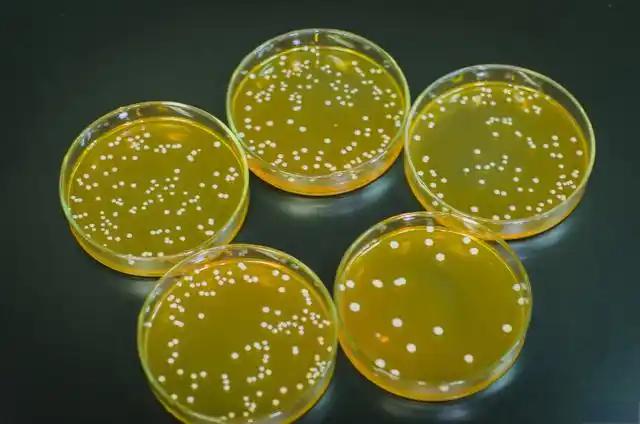
2.3 Regulating blood lipids
EGB has a significant fat-regulating effect, which can effectively improve lipid metabolic disorders and hepatic steatosis in animals with hyperlipidemia. It can also significantly increase the content of high-density lipoprotein, inhibit platelet activating factor, reduce blood viscosity and the synthesis of plasma cholesterol and fibrinogen, and increase the ratio of plasma phospholipids to cholesterol [29-31]. Lü et al. [32] showed that high-fat diet (HFD)-induced dyslipidemia, inflammation, increased atherosclerotic plaques, and intestinal barrier dysfunction can all be alleviated by GB treatment. Peng et al. [33] found that EGB can effectively reduce the serum triglyceride (TG) and total cholesterol (TC) levels in rats fed a high-fat diet. Wang Xuejing et al. [34] found that adding 0.03% to 0.48% EGB to the diet of broilers can significantly reduce the serum TG and TC levels and increase the HDL-C level.
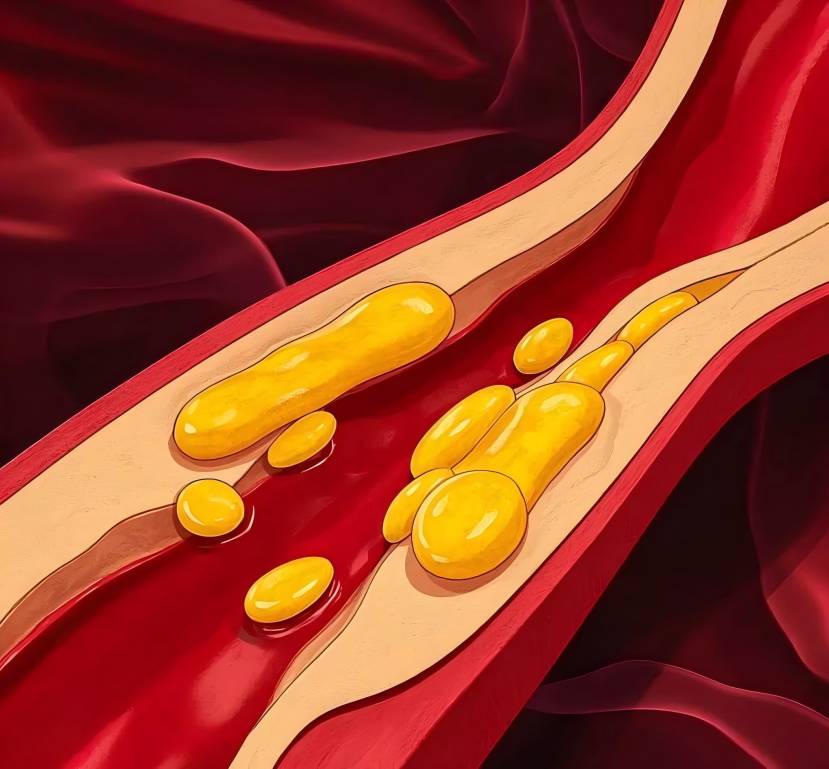
2.4 Antioxidant
Jiang et al. [35] extracted a new polysaccharide GBSPII-1 from ginkgo leaves. Under 10 g/L conditions, GBSPII-1 had a scavenging rate of 76.5% for H2O2-induced erythrocyte hemolysis and 89.20% for DPPH free radicals. Ginkgo biloba flavonoids can inhibit the damage to cells caused by free radicals and effectively prevent cell membranes from being oxidized, thus improving the antioxidant capacity of the animal body [36]. Feng Jing et al. [37] pointed out that the free radical scavenging rate increases with the concentration of ginkgo biloba flavonoids, and the mechanism of action may be that the hydroxyl group on the benzene ring of the flavonoid is a good electron donor and therefore has a very good recovery ability. EGB can effectively fight free radicals, damage unsaturated fatty acids, protect membrane proteins, and prevent irreversible polymerization caused by degradation products. It can effectively prevent the occurrence and development of various diseases caused by oxygen radical toxicity, such as hypoxia, atherosclerosis, neurodegenerative diseases, and even tumors [38]. Ginkgolides and bilobalide can inhibit the H2O2-induced decrease in superoxide dismutase (SOD) and glutathione peroxidase (GSH-Px) activity, inhibit the increase in malondialdehyde (MDA) release, reduce the production of reactive oxygen species (ROS), reduce the production of inflammatory factors tumor necrosis factor-alpha (TNF-α), interleukin-1β (IL-1β), and interleukin-6 (IL-6) [39].
The mechanisms by which the components of EGB exert their antioxidant stress effects include: Ginkgolides A, B, and C can reduce ROS levels, inhibit the release of lactate dehydrogenase (LDH), TNF-α, IL-1β, and IL-6, increase cell proliferation and free radical trapping activity; ginkgolides can inhibit H2O2-induced expression of active substances and thus protect against oxidative stress [40]; quercetin can reduce lipid peroxidation in the blood plasma and the phosphorylation of the NF-κB inhibitor β (IkBβ) and eliminate free radicals [41-42]; kaempferol can increase glutamate glutamate-cysteine ligase catalytic subunit (GCLC), BDNF, B-cell lymphoma-2 gene (BCL-2) and glutathione (GSH) expression; reduce neurotoxicity induced by 3-nitropropionic acid (3-NP) and increase apoptosis gene (BAX) through ROS, eliminate free radicals [43-45].
3 Application of Ginkgo biloba and its extracts in livestock and poultry production
3.1 Application of Ginkgo biloba and its extracts in monogastric animal production
3.1.1 Application of Ginkgo biloba and its extracts in broiler production
The various active substances in Ginkgo biloba and its extracts can affect animal metabolism to varying degrees, promote growth, and improve animal growth performance [46]. Yue Wen et al. [47] found that adding 0.4% EGB to the basic diet of broilers can significantly increase the serum immunoglobulin A (IgA) and immunoglobulin M (IgM) levels of broilers, increasing by 13.95% and 89.74%, respectively. Hou Xudong et al. [48] found that adding ginkgo biloba polysaccharide to the diet of palace yellow chickens improved their NDV antibody titers. Compared with the control group, the antibody titers of the group supplemented with 4 g/kg ginkgo biloba polysaccharide were significantly higher, and the humoral immune capacity of the body was effectively improved.
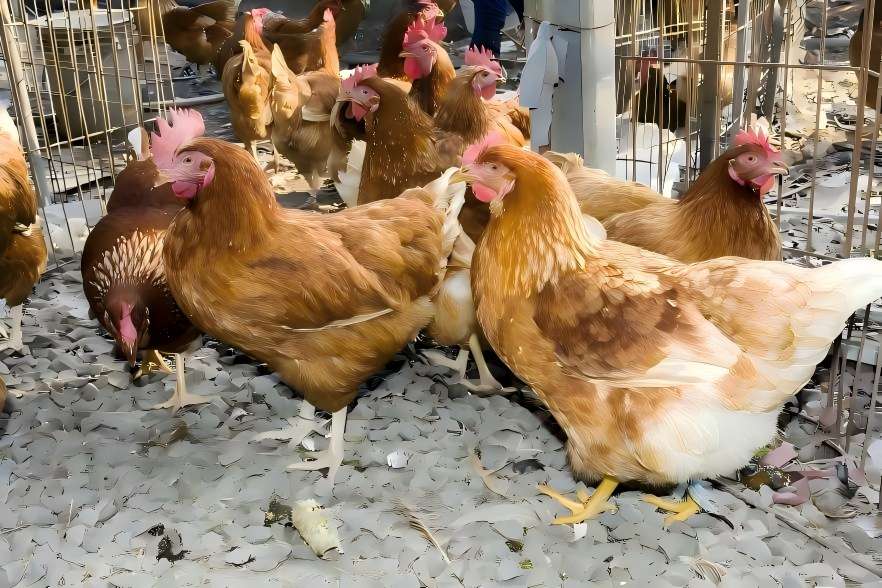
Yan Zhixun et al. [49] found that the addition of ginkgo leaf powder to the diet can improve the breast muscle rate and egg quality of Beijing oil chickens. Ren Xiaojie [50] added ginkgo leaves and EGB to the broiler diet. At 21 days, the thymus index of broilers fed a diet with ginkgo leaves increased from 1.763 to 1.894. At 42 days, the bursa index of broilers added with EGB in the diet increased from 1.360 to 1.469, effectively improving the index of immune organs in broilers. Huang Qichun et al. [51] and Yang Xiaoyan et al. [52] also obtained similar results, indicating that EGB can promote the development of immune organs in broilers, which is beneficial to the immune function and improves the body's immunity. The above studies show that EGB can not only improve the immune function of broilers, but also improve slaughter performance and growth performance.
3.1.2 Application of ginkgo and extracts in duck production
Ginkgo leaves can be used in duck farming to improve the antioxidant and immune functions of ducks. Xu Zhiyong et al. [53] found that, compared with the control group, the addition of 0.3% EGB to the diet significantly increased the average body weight of 3-week-old ducklings. EGB can regulate the levels of total triiodothyronine (T3) and total thyroxine (T4) in the blood serum. At the age of 3 weeks, the addition of 0.2% EGB significantly increased the T3 level, while T4 levels decreased significantly. T3 is partly directly secreted by the thyroid gland, but most of it comes from the conversion of T4. The results show that EGB can promote the conversion of T4 to T3, and the greater the T3/T4 value, the faster the weight gain. In addition, the addition of 0.2% and 0.3% EGB to the diet can significantly increase the serum immunoglobulin G (IgG) and IgA content, and generally improved the immune capacity of ducklings. Adding 0–800 mg/kg EGB to the basic diet of meat ducks increased the slaughter rate by 4.06%–6.00%, the half-clean rate by 4.15%–6.60%, and the full-clean rate by 3.38%–5.85% [54].

3.1.3 Application of ginkgo and extracts in pig production
Adding fermented ginkgo leaf residue to the diet of weaned piglets increased the final weight, average daily weight gain, and apparent digestibility of nitrogen and total energy, and increased the content of IgG, IgA, and IgM. Adding ginkgo products to pig diets can improve the body's immune system and antioxidant capacity, thereby improving growth performance [55]. Li Yan et al. [56] gargled 110 mL of ginkgo leaf preparations daily in immune-stressed piglets, which effectively improved the immune stress of piglets. Adding ultrafine ground ginkgo powder to the feed of growing and finishing pigs increased the daily weight gain of the pig increased by 0.23% to 4.27%, the feed conversion ratio decreased by 0.31% to 3.40%, and the total serum antioxidant capacity increased by 9.5% to 11.5%, and the liver malondialdehyde content decreased by 15.51% to 9.63% [57]. Adding 0.2% EGB to the diet of weaned piglets can increase the number of intraepithelial lymphocytes and goblet cells in the duodenum, jejunum and ileum of weaned piglets; increase the content of IgA, interleukin-2 (IL-2), interleukin-4 (IL-4) and interferon-γ (IFN- γ ), and improved the small intestinal mucosal immune barrier function of weaned piglets [58].
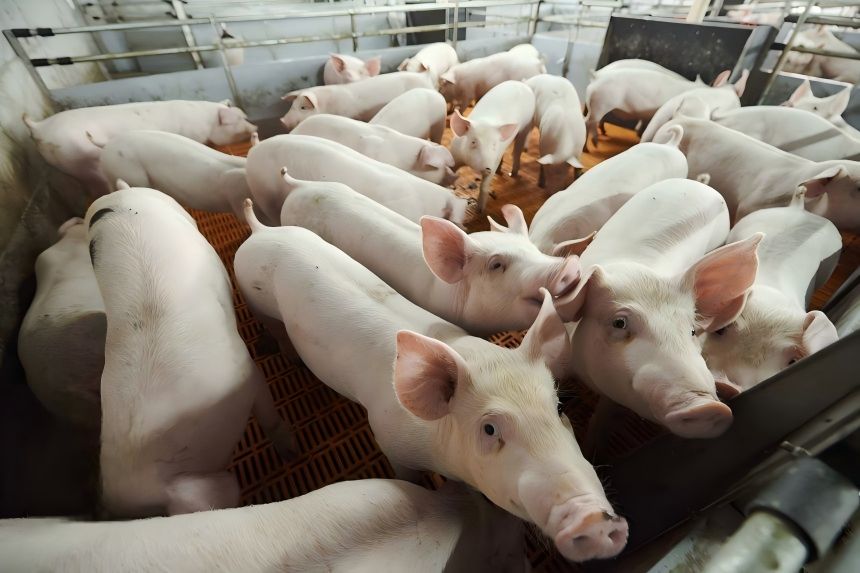
3.2 Application of ginkgo and extracts in ruminant production
Studies on ginkgo biloba leaves and extracts in the production of ruminants have also been reported. Jin Fuyuan et al. [59] added 0.02% to 0.06% EGB to the diet of breeding rams and found that the ejaculate volume of breeding rams increased by about 56%, the sperm density increased by 11% to 38%, and the sperm thawing activity also increased to a certain extent. Adding 6% to 24% Ginkgo biloba L. granules to the diet of Haimen white goats resulted in a final weight of 28.9 to 32.1 kg for the test group, which was a certain degree of increase compared to the control group (28.2 kg). Daily weight gain, average feed intake, and feed conversion rate also increased to a certain extent, and feed costs were reduced [60].
Zhang Guoli et al. [61] reported that EGB has a bacteriostatic effect on the mastitis pathogens of dairy cows. In the feeding process of cattle and sheep, feeding ginkgo biloba drug residue active compound feed during the adaptation period and subcutaneously injecting high-concentration ginkgo biloba extract nutrient solution can not only maintain the original flavor of cattle and sheep products, but also give them the flavor and health care function of ginkgo biloba [62]. Hu Gaojie et al. [63] found that the addition of ginkgo leaf powder to the diet had a certain effect on the digestion, metabolism and slaughter performance of sheep, and could reduce the perirenal fat index.
Oh et al. [64] used EGB in culture studies and evaluated its potential as a feed additive for ruminants at different crude-to-fine ratios (1:9, 3:7, 5:5, 7:3 and 9:1). The results showed that the addition of EGB significantly reduced methane production, with the best effect being a ratio of 5:5 (41.9%), followed by a ratio of 7:3 (36.7%). The addition of EGB did not affect total short-chain fatty acids and ammonia levels, increased the proportion of propionate and reduced the proportion of acetate. The study also found that EGB reduced the levels of total bacteria, Selenomonas ruminantium, Lipolytic anaerobic Vibrio, Streptococcus hyicus, Vibrio succinogenes and Succinobacterium, which may help to increase the production of propionate.
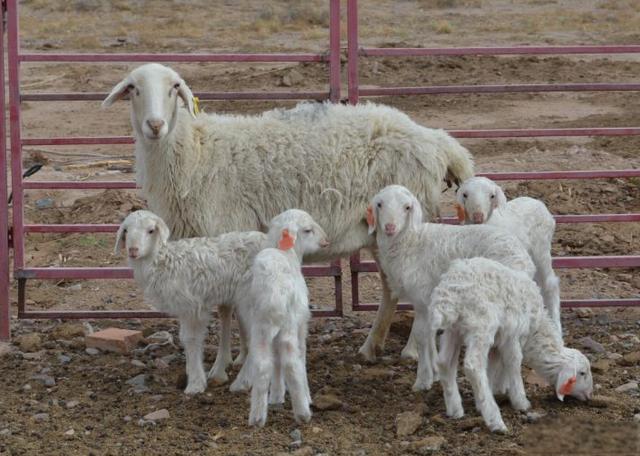
3.3 Application of ginkgo and extracts in aquatic animal production
Ginkgo biloba leaves are of some significance in aquaculture and disease prevention. Xu Weiwei et al. [65] showed that the addition of 0.25% and 0.50% fermented EGB to the feed of the oblique-banded grouper had no negative effect on growth performance, but significantly reduced the activity of AST and ALT in the liver. Tan et al. [66] added 0–10.00 g/kg EGB to the feed of hybrid grouper on a high-fat diet, improved the intraperitoneal fat rate of hybrid grouper, effectively increased the HDL content in fish plasma and reduced the plasma glucose (GLU), LDL and TG content, significantly increased the activity of liver antioxidant enzymes and significantly reduced the MDA content. In addition, EGB up-regulated the expression of antioxidant genes (CAT, GPx and GR), immune-related genes (MHC2 and TLR3) and anti-inflammatory cytokines (IL-10 and TGFβ1), and down-regulated the expression of apoptosis-related genes (p53, caspase-9, caspase-8 and caspase-3) in the head kidney of hybrid grouper.
Ye Jiansheng et al. [67] added ginkgo leaf fermented extract to the feed of Chinese mitten crab larvae, and compared with the control group, the experimental survival rate increased by 0.60% to 5.37%, and the growth rate was improved to a certain extent. Wang Xiuqin et al. [68] showed that ginkgo decoction prepared as a water extract can effectively alleviate H2O2-induced liver cell damage in flower bass. He Qin et al. [69] found that adding EGB to the feed of carp can increase the total protein (TP) in carp serum by 10% to 27%, the total antioxidant capacity (T-AOC) of the liver by about 10%, superoxide dismutase (SOD) by about 16% and catalase (CAT) activity by 10%~13%. EGB also significantly increased the expression of immune-related genes (cyp3a, c3 and c-lyz) in the liver and intestine.

4 Outlook
Ginkgo biloba and its extracts contain a variety of active ingredients that have a variety of functions in the body and can be widely used in animal farming. China is rich in ginkgo resources, and it has broad application prospects in the research and development of functional livestock and poultry feed additives. At present, research on the application of ginkgo and its extracts in animal production has been carried out to varying degrees in China, and it has been confirmed that ginkgo and its extracts have significant effects in promoting growth, improving meat quality and flavor, and enhancing immune function. However, their mechanism of action needs to be further studied.
References
[1] Yang Huiping, Gao Rui. Research progress on the medicinal components and pharmacological effects of ginkgo [J]. Advances in Animal Medicine, 2017, 38(8): 96-99.
[2] Wan Yiming, Li Yunpeng, Sang Haiqiang. Exploring the mechanism of action of ginkgo biloba extract in the treatment of atherosclerosis based on network pharmacology and molecular docking [J]. Henan Medical Research, 2022, 31(1): 1-9.
[3] Gao Xia, Huang Heming, Chen Shi. Clinical observation on the treatment of elderly cerebral thrombosis with ginkgo biloba extract combined with betahistine [J]. Chinese Journal of Practical Neurology, 2022, 25(5): 609-613.
[4] Xiao S, Cao C, Liu H, et al. Advances in the pharmaceutical research of Ginkgo biloba extract [J]. Chinese Pharmaceutical Affairs, 2022, 36(4): 429-443.
[5] Wu P, Yao F, Qi X, et al. Main components and functional activities of Ginkgo biloba [J]. Food Industry Technology, 2022, 43(9): 447-455.
[6] Liu L, Wang Y, Zhang J, et al. Advances in the chemical constituents and chemical analysis of Ginkgo biloba leaf, extract, and phytopharmaceuticals [J]. J Pharm Biomed Anal, 2021, 193: 113704.
[7] Jiang Mei, Liu Shuyan, Niu Wanbin. Effects of Ginkgo biloba extract on renal function, cardiac function, inflammatory response, and levels of 2-MG and RBP4 in rats with diabetic nephropathy [J]. Information of Traditional Chinese Medicine, 2022, 39(2): 25-29.
[8] Gao Yun, Liao Can, Yu Mengfei, et al. Research on the relaxing effect of Ginkgo biloba extract on mouse tracheal smooth muscle [J]. Asia-Pacific Traditional Medicine, 2022, 18(7):25-29.
[9] Quan Mingchun, Su Zhenhong, Fang Dawei, et al. Research progress on the extraction and function of ginkgo flavonoids [J]. Today's Pharmacy, 2020, 30(11):789-792.
[10] Song Lili, Li Qian. Research progress of ginkgo biloba flavonoids and their application in feed [J]. China Feed, 2020(23):15-19.
[11] Li L, Jiang M, Wang D, et al. Research progress on the chemical composition and pharmacology of ginkgo biloba bilobalide [J]. Journal of Shanghai University of Traditional Chinese Medicine, 2022, 36(2): 101-108.
[12] Cao F L, Zhang X H, Yu W W, et al. Effect of feeding fermented Ginkgo biloba leaves on growth performance, meat quality, and lipid metabolism in broilers [J]. Poultry Science, 2012, 91: 1210-1221.
[13] Zhu Mengying, Ren Jiani, Shen Na, et al. Research progress on the chemical composition, biological activity and resource utilization of Ginkgo biloba outer seed coat [J]. West China Journal of Pharmacy, 2022, 37(5): 587-593.
[14] De Souza G A, De Marqui S V, Matias J N, et al. Effects of Ginkgo biloba on diseases related to oxidative stress [J]. Planta Med, 2020, 86: 376-386.
[15] Ren X J, Yang Z B, Ding X, et al. Effects of Ginkgo biloba leaves (Ginkgo biloba) and Ginkgo biloba extract on nutrient and energy utilization of broilers [J]. Poultry Science, 2018, 97: 1342-1351.
[16] Li Weixian, Ren Yanting, Zhang Yanan, et al. Research on the antioxidant properties of ginkgo biloba polysaccharides [J]. Anhui Agricultural Science Bulletin, 2021, 27(9): 27-29.
[17] Sun Lin, Liu Ping, Zhu Qianlong, et al. Application research on ginkgo biloba leaves and extracts in poultry production [J]. Cereals, Oils and Feed Science and Technology, 2022(1):44-46.
[18] Luo Xiangmin, Lei Fang, Chen Wei, et al. Qualitative detection and content determination of components in ginkgo biloba extract [J]. Chemical Reagents, 2021, 43(2):191-195.
[19] Chen Guohua, Deng Fuliang, Liu Jianping, et al. Analysis of amino acid and vitamin content in ginkgo biloba leaves. Journal of Hunan Medical University, 2001(4):335-336.
[20] Li Qian, Tang Xinlei, Xu Jianghao, et al. Research progress on functional factors and extraction processes in ginkgo biloba leaves [J]. Food Research, 2021, 38(3): 61-66.
[21] Zhao Kun, Zhang Wei, Che Yuqin. Anti-infection immune mechanism of ginkgo flavonoid glycosides regulating the neurotrophic factor signaling pathway in CIRI rats [J]. Journal of Immunology, 2022, 38(8): 645-654.
[22] Qian Xiufang, Sun Huixian, Wang Chen, et al. Protective effect of ginkgo flavonoids on myocardial ischemia/reperfusion injury [J]. Armed Police Medicine, 2022, 33(9): 755-758.
[23] Jin Cailing, Zhao Shupeng, Ji Yinghua, et al. Effects of ginkgolide B on proliferation, migration, invasion and apoptosis of lung cancer cells A549 through MMP9/STAT3 signaling pathway [J]. Chinese Medicine Information, 2022, 39(1): 19-23, 28.
[24] Ye J, Ye C, Huang Y, et al. Ginkgo biloba sarcotesta polysaccharide inhibits inflammatory responses through suppressing both NF- κB and MAPK signaling pathway[J]. J Sci Food Agric, 2019, 99: 2329-2339.
[25] Šamec D, Karalija E, Dahija S, et al. Biflavonoids: Important contributions to the health benefits of Ginkgo (Ginkgo biloba L.) [J]. Plants (Basel), 2022, 11(10): 1381.
[26] Noor E T, Das R, Lami M S, et al. Ginkgo biloba: A treasure of functional phytochemicals with multimedicinal applications[J]. Evid Based Complement Alternat Med, 2022: 8288818.
[27] Wu F, Shi W, Zhou G, et al. Ginkgolide B functions as a determinant constituent of Ginkgolides in alleviating lipopolysaccharide-induced lung injury[J]. Biomed Pharmacother, 2016, 81: 71-78.
[28] Wen Z, Zhao Y, Gong Z, et al. The mechanism of action of ginkgolic acid (15∶1) against Gram-positive bacteria involves cross talk with iron homeostasis[J]. Microbiol Spectr, 2022, 10: e0099121.
[29] Wang L T, Huang H, Chang Y H, et al. Biflavonoids from Ginkgo biloba leaves as a novel anti-atherosclerotic candidate: Inhibition potency and mechanistic analysis[J]. Phytomedicine, 2022, 102: 154053.
[30] Li Z, Tian S, Wu Z, et al. Pharmacokinetic herb-disease-drug interactions: Effect of Ginkgo biloba extract on the pharmacokinetics of pitavastatin, a substrate of Oatp1b2, in rats with non-alcoholic fatty liver disease[J]. J Ethnopharmacol, 2021, 280: 114469.
[31] Zheng Y, Li S, Li C, et al. Hypolipidemic effect of ginkgo biloba peptide on mice with hyperlipidemia induced by high-fat diet [J]. Food Industry Technology, 2022, 43(17): 417-423.
[32] Lü Z, Shan X, Tu Q, et al. Ginkgolide B treatment regulated intestinal flora to improve high-fat diet induced atherosclerosis in ApoE(-/- ) mice [J]. Biomed Pharmacother, 2021, 134: 111100.
[33] Peng Liang, Zhao Peng, Li Bin, et al. Research on the effect of Ginkgo biloba extract on regulating blood lipids in rats [J]. Applied Preventive Medicine, 2012, 18(4): 249-250, 235.
[34] Wang Xuejing, Zang Sumin, Zhang Li, et al. Effects of Ginkgo biloba extract on growth performance, blood lipids and antioxidant function in broiler chickens [J]. Animal Husbandry and Veterinary Medicine, 2006(11): 40-42.
[35] Jiang H, Luan Z, Fan Z, et al. Antibacterial, antibiofilm, and antioxidant activity of polysaccharides obtained from fresh sarcotesta of Ginkgo biloba: Bioactive polysaccharide that can be exploited as a novel biocontrol agent[J]. Evid Based Complement Alternat Med, 2021: 5518403.
[36] Xu Maicheng, Cheng Xinmei, Ma Lvli. Study on the effective dose of ginkgo biloba extract in regulating blood lipids in a rat model of hyperlipidemia [J]. Chinese Herbal Medicine, 2021, 52(2): 454-458.
[37] Feng Jing, Peng Xiaoming, Li Cuiqing, et al. Antioxidant properties and stability of ginkgo biloba flavonoids. Food Science and Technology, 2019, 44(4): 244-249.
[38] Wang F F, Ye S H, Ding Y, et al. Research on structure and antioxidant activity of polysaccharides from Ginkgo biloba leaves[J]. Journal of Molecular Structure, 2022, 1252: 132185.
[39] Xiong Lidan, Tang Jie, Li Li. Protective effects of ginkgolides A and B on hydrogen peroxide-induced oxidative damage in human keratinocytes [J]. Journal of Daily Chemical Industry, 2019, 49(8): 531-536.
[40] Zhang Haolong. Effects and mechanisms of ginkgolides on DSS-induced mouse ulcerative colitis model [D]. Changchun: Jilin University, 2022.
[41] Meihua Di, Tian Qi, Qu Shengfu, et al. Physiological functions of quercetin and its application in chicken production [J]. Chinese Journal of Animal Science and Veterinary Medicine, 2022, 49(6): 2116-2128.
[42] Shu Xin, Guo Qing, Gao Yanxiang. Research progress of quercetin and its delivery system [J]. Food Science, 2022,43(7):202-212.
[43] Fang Zhaoyan, Bei Weijian, Luo Dosheng, et al. Network pharmacology study on the antioxidant mechanism of ginkgo biloba extract [J]. Chinese Medicine New Drugs and Clinical Pharmacology, 2020,31(8):942-949.
[44] Jiang Yongmei. Study on the extraction of bilirubin and its antioxidant activity from Selaginella tamariscina and Ginkgo biloba by ultrasound-assisted ionic liquid extraction [D]. Zunyi: Zunyi Medical University, 2020.
[45] Li Yanping, Zhang Lihu, Wu Hongyan, et al. Research progress on the components and effects of Ginkgo biloba [J]. Food Research and Development, 2020, 41(15): 182-187.
[46] Zhang Min, Qiu Longxin, Lin Biaosheng, et al. Effects of compound Ginkgo biloba herbal fermentation preparations on growth performance, immune function and antioxidant function of broilers [J]. China Poultry, 2021, 43(8): 48-53.
[47] Yue W, Huang M, Li Y, et al. Effects of a ginkgo biloba compound preparation on the growth performance and immune function of AA broiler chickens [J]. Heilongjiang Animal Husbandry and Veterinary Medicine, 2019(23):106-110.
[48] Hou X, Zhang H, Li J. Effects of ginkgo biloba polysaccharides on the immune function of imperial yellow chickens [J]. Feed Research, 2022, 45(10): 40-43.
[49] Yan Zhixun, Chu Qin, Zeng Lingchao, et al. Effect of ginkgo biloba leaf addition to the feed on the slaughter performance and egg quality of Beijing oil-laying hens [J]. Feed Research, 2021, 44(1): 39-41.
[50] Ren Xiaojie. Effects of Ginkgo biloba and its extracts on the production performance, antioxidant indicators and immune performance of broilers [D]. Tai'an: Shandong Agricultural University, 2018.
[51] Huang Qichun, Chen Tong, Zheng Xintian, et al. Effects of Ginkgo biloba extract on the immune organ index and local body fluid immunoglobulin content in the digestive tract of broiler chickens [J]. Journal of Anhui Agricultural University, 2011, 38(6): 892-895.
[52] Yang Xiaoyan, Lin Yuexin, Li Yan. Effects of Ginkgo biloba extract on the production performance, slaughter performance and immune indicators of broilers [J]. Journal of Fujian Agriculture and Forestry University: Natural Science Edition, 2008(3): 295-298.
[53] Xu Zhiyong, Chen Xiaopan, Wang Wenguo, et al. Effect of Ginkgo biloba extract on the production performance of ducklings and the content of growth hormones and thyroxine in serum [J]. Heilongjiang Animal Husbandry and Veterinary Medicine, 2015(19): 206-208.
[54] Li Y, Zhang L, Zheng Z, et al. Effect of Ginkgo biloba extract on the pre-production performance of meat ducks [J]. Feed Industry, 2006 (5): 25-27.
[55] Sun L, Liu P, Zhuo W, et al. Application of Ginkgo biloba and its extract in pig production [J]. Pig Raising, 2021 (6): 19-21.
[56] Li Yan, Yue Wen, Li Ting, et al. Effect of compound Ginkgo biloba on growth performance and blood serum metabolomics characteristics of immune-stressed piglets [J]. Journal of Animal Nutrition, 2021, 33(4): 2311-2320.
[57] Zhang Xianglun, Lu Peng, Xue Wenyue, et al. Effect of ultrafine grinding of ginkgo biloba on the production performance and antioxidant function of growing and finishing pigs [J]. Grain and Feed Industry, 2014 (12): 44-47.
[58] Huang Qichun, Chen Tong, Zheng Xintian, et al. Effect of ginkgo biloba extract on the immune barrier of the small intestinal mucosa in weaned piglets [J]. Journal of Anhui Agricultural University, 2015, 42(5): 711-714.
[59] Jin Fuyuan, Tao Yanhua, Liu Meihua, et al. Effect of Ginkgo biloba extract on semen quality of breeding rams [J]. China Animal Husbandry and Breeding, 2021, 17(12): 49-51.
[60] Chen Y, Gong X, Yang T, et al. Ginkgo biloba L. residues partially replacing alfalfa hay pellet in pelleted total mixed ration on growth performance, serum biochemical parameters, rumen fermentation, immune function and meat quality in finishing Haimen white goats[J]. Animals (Basel), 2021, 11(11): 3046.
[61] Zhang Guoli, Ma Gaomin, Bai Wanfang. In vitro antibacterial test of ginkgo biloba leaf extract against mastitis pathogens in dairy cows in different seasons [J]. Chinese Dairy, 2022(4):25-30.
[62] Pan Lingyang. A method for producing ginkgo biloba products for cattle and sheep: CN201210494235.1 [P]. 2012-11-28.
[63] Hu Gaojie, Yang Gaiqing, Wang Linfen, et al. Effects of ginkgo biloba on growth, slaughter performance and nutrient utilization of sheep [J]. Chinese Journal of Animal Science and Veterinary Medicine, 2020, 47(4): 1041-1049.
[64] Oh S, Koike S, Kobayashi Y. Effect of Ginkgo extract supplementation on in vitro rumen fermentation and bacterial profiles under different dietary conditions[J]. Anim Sci J, 2017, 88: 1737-1743.
[65] Xu Weiwei, Li Zexin, Song Kai. Effect of fermented ginkgo biloba leaves on the growth performance, plasma biochemical indicators and liver antioxidant indicators of the orange-spotted grouper [J]. Journal of Animal Nutrition, 2020, 32(2): 959-964.
[66] Tan X, Sun Z, Liu Q, et al. Effects of dietary Ginkgo biloba leaf extract on growth performance, plasma biochemical parameters, fish composition, immune responses, liver histology, and immune and apoptosis-related genes expression of hybrid grouper (Epinephelus lanceolatus♂ × Epinephelusfuscoguttatus早) fed high lipid diets[J]. Fish Shellfish Immunol, 2018, 72: 399-409.
[67] Ye Jiansheng, Yuan Sheng, Jiang Rong, et al. Effect of Ginkgo biloba leaf fermented extract on the survival and growth rate of juvenile Chinese mitten crabs (Eriocheir japonica) [J]. Journal of Fisheries of China, 2022, 35(1): 47-51.
[68] Wang Xiuqin, Zhang Chunxiao, Lu Kangle, et al. Protective effect of Chinese herbal medicine on oxidative damage to liver cells of flower bass [J]. Journal of Jimei University: Natural Science Edition, 2021, 26(5): 408-414.
[69] He Q, Jia R, Cao L, et al. Effects of Ginkgo biloba extract on growth performance, antioxidant function and immune-related gene expression in common carp [J]. Chinese Journal of Fisheries Science, 2021, 28(3): 326-336.


 English
English French
French Spanish
Spanish Russian
Russian Korean
Korean Japanese
Japanese